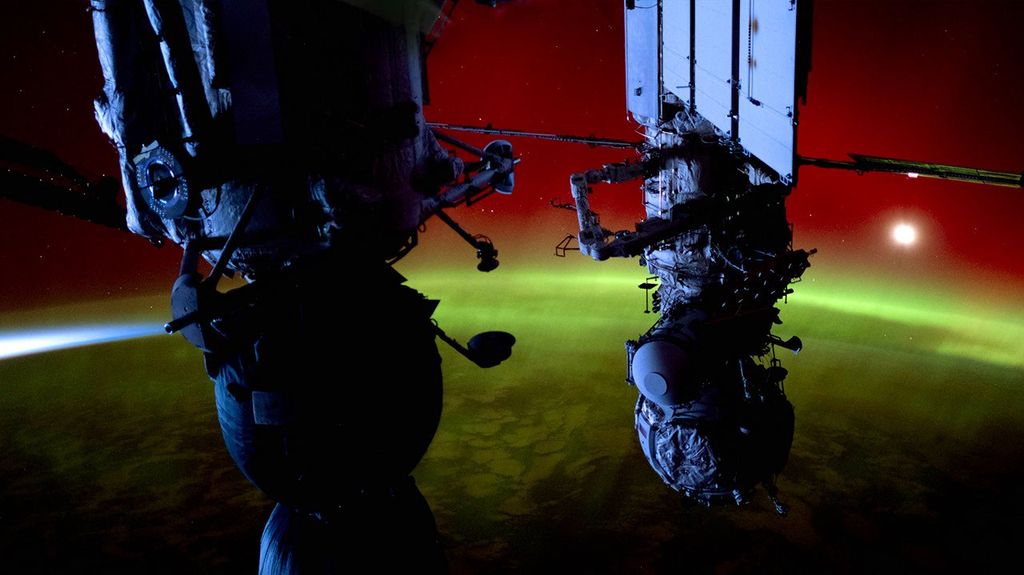1 min read
Jet Structure in the Orion Nebula

This photograph, made with the Wide Field/Planetary Camera on NASA's Hubble Space Telescope, reveals the detailed structure of a newly discovered jet of material streaming away from a young star in the Orion Nebula.
While similar jets have been seen from the ground, the new observations reveal the structure of this jet with unprecedented clarity. Of particular significance is the fact that the jet is bright along its edges in the light of gaseous sulfur atoms (shown here in red). Experts believe this structure to be due to shock fronts at the boundary between the jet and the surrounding gas of the Orion Nebula. Astronomers say that jets such as this are of interest because they provide clues about how stars form and how young stars affect their environment.
The field shown is only a very small portion of the "Great Nebula" in Orion, which is a tremendous "stellar nursery" about 7 light years in size and located approximately 1,500 light-years from the Earth. The nebula glows in a number of distinct colors, each due to atoms of a different chemical element. In the picture, emission from ionised sulfur items are shown in red, light from ionized oxygen atoms is shown in blue, and light from hydrogen atoms is shown in green.
The Orion Nebula glows because of the intense ultraviolet light from a cluster of hot young stars within it. The detailed structural information in these images, which show features that are smaller than our solar system (about 6 light hours across), is possible thanks to the high spatial resolution (sharpness) of images obtained with the Hubble Space Telescope. Astronomers say that despite the spherical aberration of the telescope's main mirror, about 15% of the light from an object is still focussed into a very tight image, and that allows the small scale structure of objects to be seen better than in ground based images which are blurred by the earth's atmosphere.
The images shown here have been computer processed to partially correct for the effect of the mirror's flaw. The Wide Field/Planetary Camera was designed and built by the Jet Propulsion Laboratory, which is operated by the California Institute of Technology.
About the Object
- R.A. PositionR.A. PositionRight ascension – analogous to longitude – is one component of an object's position.05h 35m 17.29s
- Dec. PositionDec. PositionDeclination – analogous to latitude – is one component of an object's position.-5° 23' 27.99"
- Object NameObject NameA name or catalog number that astronomers use to identify an astronomical object.Orion Nebula, M42, NGC 1976
- Release DateOctober 4, 1990
- Science ReleaseNASA’s Hubble Space Telescope Discovers Jet Structure In The Orion Nebula
- Credit
Share
Details
Claire Andreoli
NASA’s Goddard Space Flight Center
Greenbelt, Maryland
claire.andreoli@nasa.gov

























